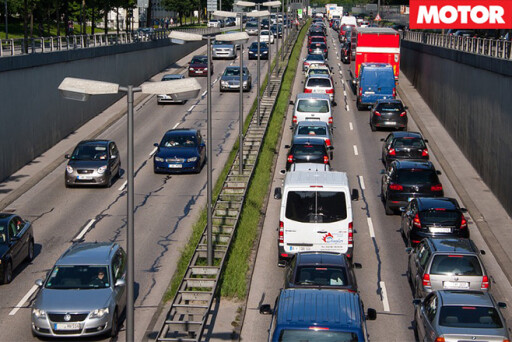
In stark contrast to the performance cars racing around the track, the earthmovers trudged on slowly, chewing up the pastures and roads leading to Oran Park Raceway.
Adding insult to injury, the housing mob had set up shop in the corporate suites above pit lane, and they were filled with frothing families plotting out their white-picketed dream.
One could not help but feel an affinity with those crazy conservationists picketing the last few trees in the rainforest. Okay, so our cause was far from green; burning copious fossil fuels in furious final laps before Oran Park Raceway became ‘Oran Park Town’. But we were still witnessing the death of an endangered habitat.
Oran Park and Amaroo are obvious victims of our increasing population, what with the land – in reasonable proximity to Sydney – being more valuable as a housing estate than as a racetrack. But as the housing market heaves under the weight of demand, is the next victim of urban expansion the car itself?
With no end in sight to the population increase and influx, we currently need twice as many houses. But it isn’t possible to build twice as many roads.
 The Pollies ramble on about infrastructure as the key to unlocking the housing market and sustain our growing population, but they aren’t talking about roads. Apparently, anyone within a 30km radius of a major megalopolis needs to park their cars and get on a bike, use their boots, or catch the bus. That’s their forward planning…
The Pollies ramble on about infrastructure as the key to unlocking the housing market and sustain our growing population, but they aren’t talking about roads. Apparently, anyone within a 30km radius of a major megalopolis needs to park their cars and get on a bike, use their boots, or catch the bus. That’s their forward planning…
Throwing up countless units amid our existing infrastructure has been an insidious issue for some time now. While it may have helped alleviate the city’s housing and rental shortages – and the top-knotted/bearded hipster crowd prefer to use either pedal or bi-pedal power to get about town anyway – there will always be people with cars, so they continue to congest streets that were built for half their number.
And besides, cars will always fill the hole left by commuters shifting to any new and alternate public transport systems. It even has a funky catchphrase these days: “induced demand”.
Anyone who has driven – crawled – through peak-hour traffic in multi-lane US superhighways knows that no matter how many lanes you build, gridlock is inevitable. Make streets bigger and more people will flood onto them; shrink them and drivers will use other routes or other methods.
 Prime examples of induced demand are the ED/M5 in Sydney and the Western Ring Road in Melbourne – arterials which were lauded as the solution to all our problems and ended up being just another carpark as more houses sprung up along its path.
Prime examples of induced demand are the ED/M5 in Sydney and the Western Ring Road in Melbourne – arterials which were lauded as the solution to all our problems and ended up being just another carpark as more houses sprung up along its path.
Some of the world’s major cities are now reclaiming their major freeways, resolved to the fact that they simply aren’t working, and turning them into something ‘greener’ – literally. Seoul, Madrid, and major US cities including San Francisco, Portland, Boston, Dallas and Milwaukee are decommissioning the eight-lane eyesores and overpasses and turning them into green corridors with markets, community projects and art installations.
Some are even getting turned into landscaped multifunctional thoroughfares for pedestrians, bikes, and some motorcycles and cars. The actual roadways are either sent underground or redirected altogether – and no city seems to be the worse for it traffic-wise, if you believe the reports. But it seems like spin to me – a pretty Band-Aid on a still-bleeding wound.
Our major cities need a proper fix for our infrastructure that includes all modes of transport, not just a reactive solution to today’s woes. It needs a proactive, sustainable roadscape looking decades into the future.
If something doesn’t give soon, there will be nowhere to race a car and even fewer places left to actually drive one, particularly if you want to get out of second gear. I for one want to hang on to my wheels and don’t want to have to move out to old racetrack graveyards to do so.

COMMENTS